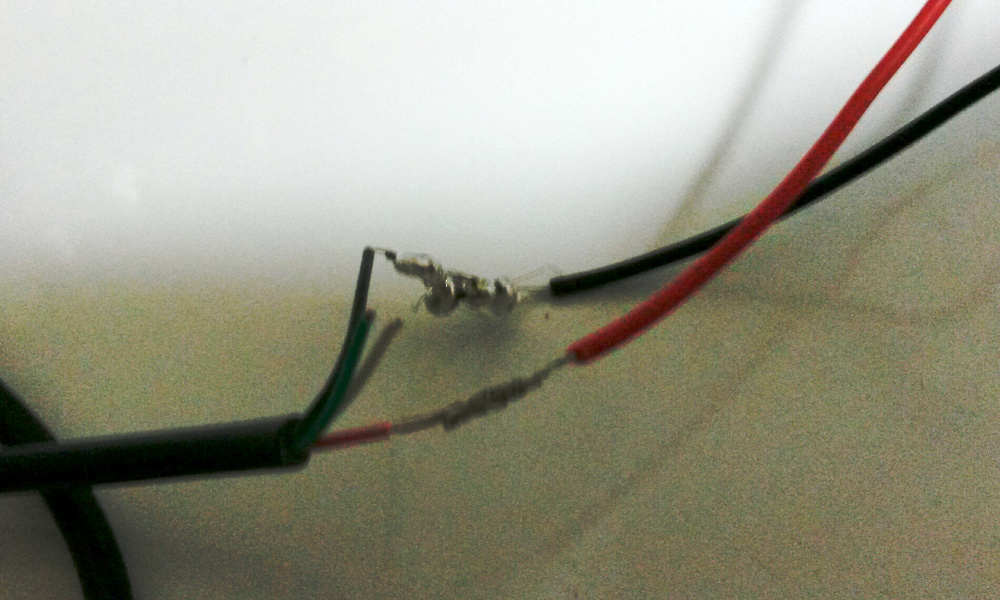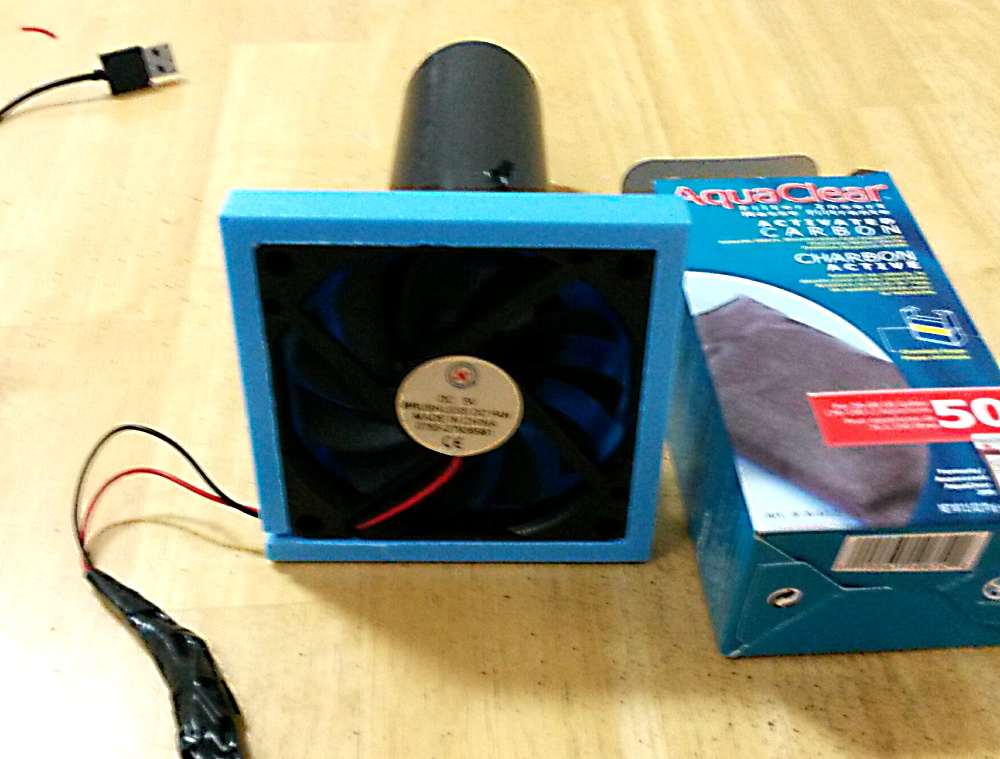DIY Air Filter
This post is about one of the DIY projects hinted at in my previous post: an indoor air quality filter.
Activated carbon can adsorb volatile compounds (such as odours)—see the discussion here. I wanted to rig up a means of blowing air past an activated carbon filter; it could then be left in a room to recirculate and purify the air (at least in theory).
To move the air, I had a 5V computer cooling fan. Because it was only 5V, it could conveniently be powered off of USB. A USB cable contains 4 wires:
- red, VBUS, +5 volt
- green and white, data +/- (respectively)
- black, ground
The activated carbon filter came in the form of a mesh bag. I got it from a pet store as it is commonly used in aquarium filters. It fit snugly into a 40 mm pipe.
To connect the fan with the length of pipe holding the activated carbon, I designed a manifold for the fan and had it 3D printed. I've uploaded the file to Thingiverse.
To fit the fan in, I had to trim off the holder tabs and shave some of the sides down just a bit, but once it was in it fit securely.
Here are a couple of pictures (sorry about the low image quality this time):
The first image shows the power leads of the fan being connected to the power and ground wires of the USB cable. I stripped the ends of the wires then twisted and soldered them together, red to red and black to black (the green and white data channels were not needed). I definitely still need to practice soldering, but I think I'm improving.

The next image shows the completed project. The black length of pipe behind the blue 3d-printed manifold is stuffed with a bag of activated carbon.

With the low power of the fan and the tight packing of activated carbon, I think there might be too much of a pressure drop to really get much airflow through the filter. But I'm still going to run it periodically in case it does have a benefit.
If you make this, do so at your own risk. Heed the warnings on soldering tools and be aware of the risks of shock and fire from DIY electrical connections.